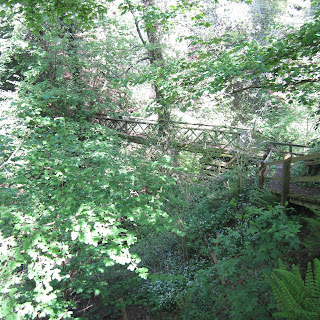Another arrangement will be, that the gardener is paid a certain amount in wages, more or less, according as a house is provided for him or not, and in that case the usual arrangement is that the owner and the gardener divide the profits on the sale of the flowers. This, of course, is just applying to the garden the system which all, or nearly all, the farms in Tuscany are worked, for it is rare to find a contadino sufficiently well to do to be able to rent a farm on his own account. Some cheating in the settlement of accounts is inevitable, but not to such an extent as might be supposed, for a computista or accountant is employed who goes through these, at stated times, and who can tell to a nicety how many barrels of wine or of oil ought to be forthcoming. Of those unhappy forestieri who have bought land here, and attempted to manage it themselves, I hardly know one, among my own personal friends, who has found it possible to get a supply of vegetables for his own table, and who has not been thankful eventually to resign the charge of management into the hands of a professional fattore.
But to confine ourselves to garden arrangements. There is yet another set of conditions under which many of those are worked: the sale of flowers is agreed for, but not that of plants.
Where the gardener is allowed to sell both flowers and plants, good-bye may be said to any idea of pleasure in the garden, which then becomes only a market garden, “kept”, up to the very door and windows of the house, in the most appalling state of mess and disorder.
In the case where no wages at all are paid, the landlord is bound to provide a certain amount of “plant”, glass houses and fuel to work them, as the Tuscan winters are often bitterly cold, and unless means of forcing were liberally provided there would be nothing for the gardener to sell. Although labour of all kinds is as yet very cheap in Tuscany, gardening, properly carried out, is a somewhat expensive pursuit. Fuel is very costly, and many different kinds of earth are required: castagna, scopa, terra bruga, of all of which a supply must be provided every spring for re-potting. These are often brought from a great distance by very primitive “wild-men-of-the-woods” looking people. They generally try to persuade you that their price is precisely that which was asked, and which you paid last year; but a reference to your account book will probably show that a considerable addition is being made. But to do them justice, their trust in the English word is unbounded, and, although they can neither read nor write, if you point to the entry in the book, and say, “You see this is what I paid you last year”, the little attempt at an addition is at once abandoned. I was taking the address one day, of one of these gentry, and asked, “Well, but is that all?” and the answer was, “If you put Il Feroce on the envelope every one will know whom the letter is for.”
No Tuscan will ever spend one franc for the purpose of making two francs, and the way the poor plants are starved is afflicting to see, - pots only half full of earth, and that of a very poor quality.
The subsoil here is always a mystery, but, as a rule, it is safe to assume that it is bad, and one constantly sees fruit trees and fine old ornamental firs that have struck something fatal at the roots, slowly decaying till they are cut down.
It is extremely difficult to get a Tuscan gardener who has been accustomed to selling, to be content to forego the practice, even if his wages are on a scale to afford him a larger profit as well as the advantage of being a certainty. I have known several instances here of foreigners who have bought properties and have endeavoured to keep the garden entirely for home use, but who have been obliged to revert to the old system of the country.
It will therefore be easily understood, that the well-ordered English garden is a thing not to be achieved here in Tuscany. One may reproduce it with a certain amount of success, as I believe we ourselves have done; but I would almost say that if you wish to enjoy your English garden in Italy, you must suffer the ghost of your English “standard” to sleep. By enjoy, I mean possessing your soul in patience, and not crying for the moon. And you will, also, very soon discover, as I did, that any little knowledge you may have appertaining to garden matters in England is absolutely useless here in Tuscany, where all the conditions of soil and climate and methods are so entirely different.





